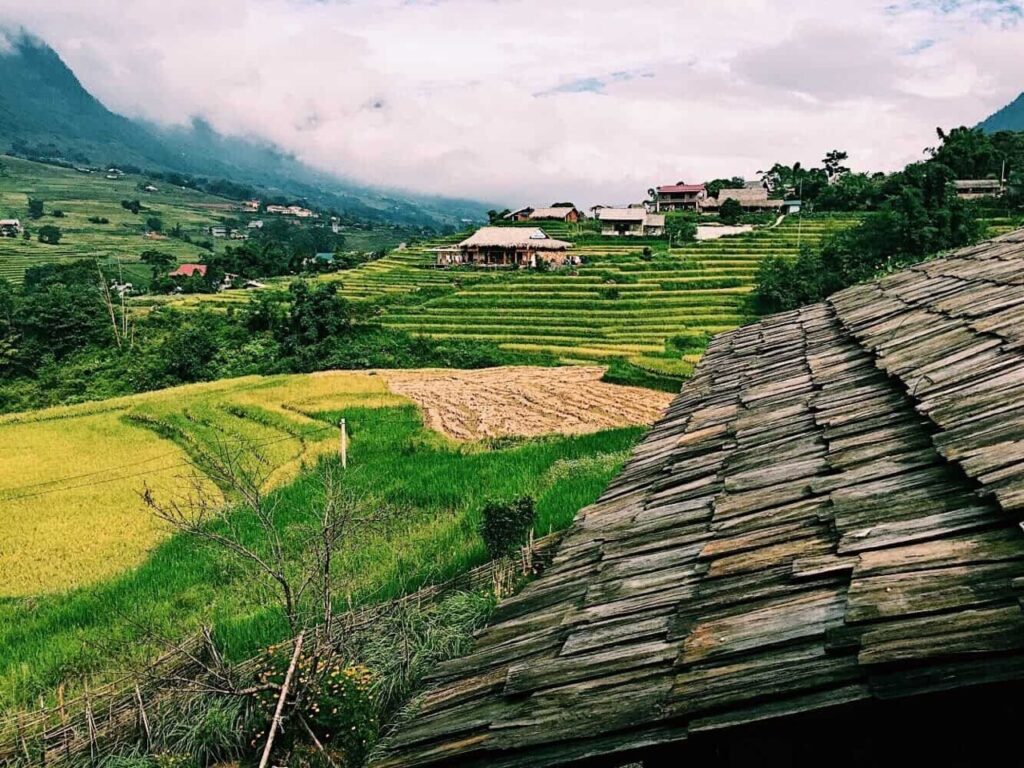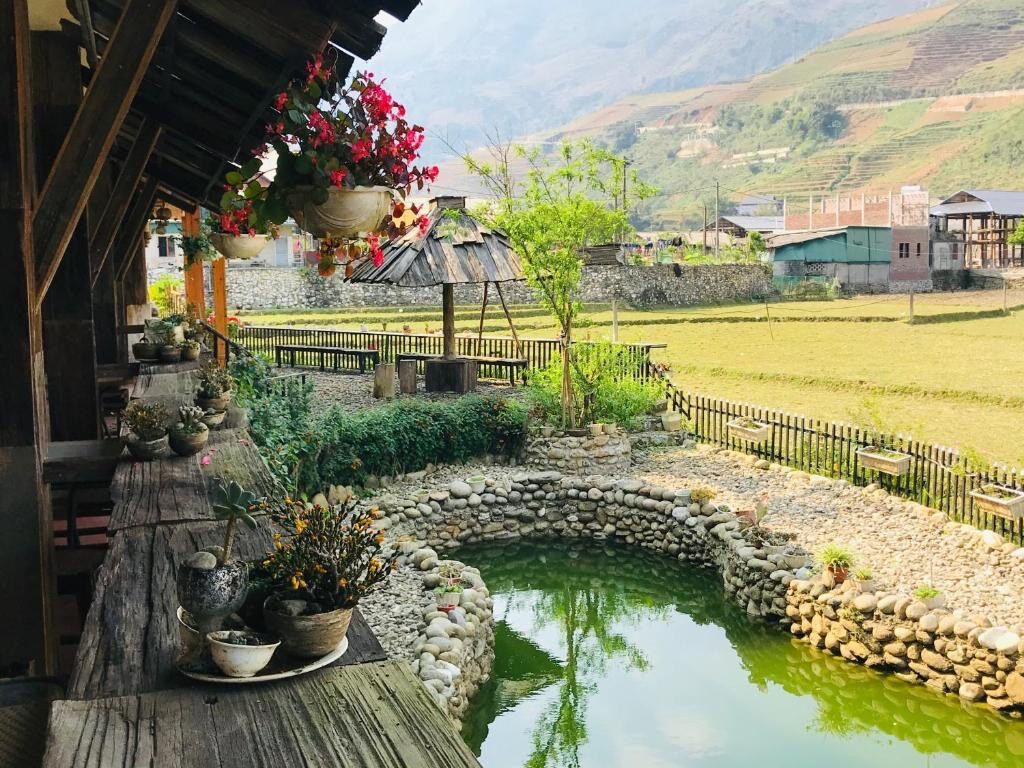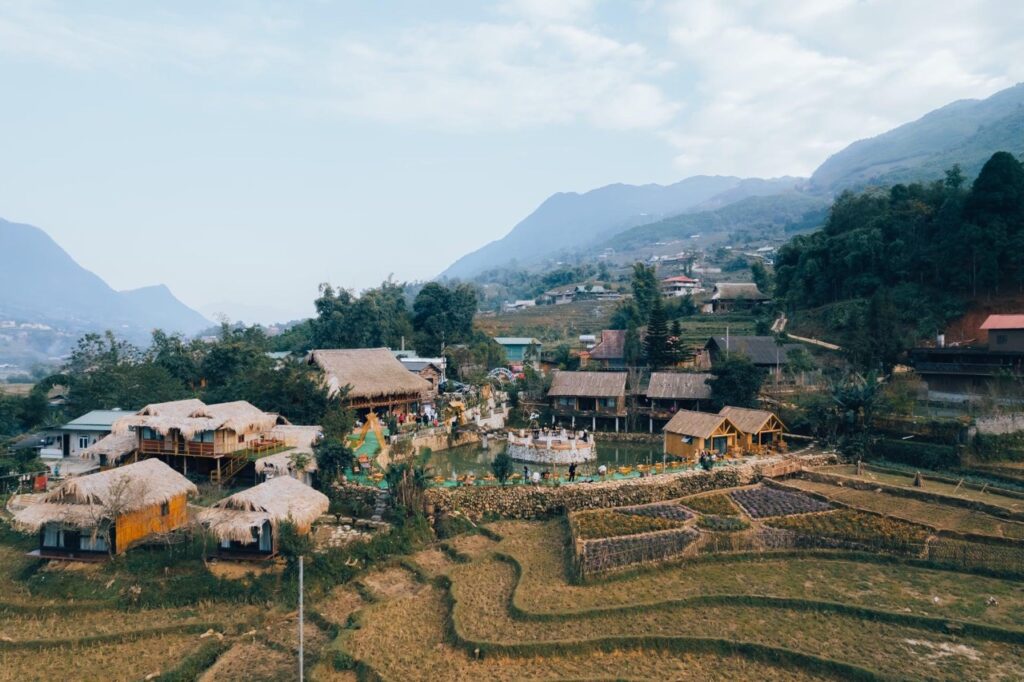Ta Van Village, in the serene landscapes of northern Vietnam, is a treasure trove of culture, heritage, and natural beauty waiting to be discovered by intrepid travelers. This hidden treasure provides a special chance to experience the true essence of rural life and engage with the friendly locals who reside there.
Location and Background

Situated in the picturesque Muong Hoa Valley, Ta Van Village enjoys a stunning backdrop of terraced rice fields, lush forests, and mist-shrouded mountains. Located near the town of Sapa in Lao Cai Province, the village has a rich history shaped by the diverse ethnic groups that inhabit the region, including the H’mong, Giay, and Red Dao.
Cultural Diversity
What makes Ta Van Village truly special is its rich cultural tapestry. Each ethnic group has their own unique traditions, languages, and customs, creating a diversity of this place. Visitors can have a chance to observe traditional ceremonies, participate in local festivals, and learn about the ancient customs that have been preserved for generations.
Natural Beauty

The natural splendor of Ta Van Village is absolutely stunning. The village is a perfect destination for nature lovers and outdoor enthusiasts with its rolling hills, cascading waterfalls, lush forests, and tranquil rivers. Hiking through the nearby countryside provides unmatched views and an opportunity to immerse oneself in the untouched beauty of the landscape.
Homestay Experience

Visitors can choose to stay with local families in Ta Van Village for a real experience. Homestay accommodations offer a glance into everyday life in the village, with opportunities to participate in daily activities, share meals with the family, and learn about traditional farming practices. The warm hospitality and genuine kindness of the hosts make for an unforgettable experience. Some example of homestay in there:
- MT House SaPa
- Hmong House Sapa
Local Cuisine
No visit to Ta Van Village is complete without indulging in the delicious local cuisine. From hearty soups and flavorful stir-fries to fresh vegetables and succulent meats, the village’s culinary offerings are a true delight for the senses. Be sure to try traditional dishes like “thang co” (a savoury stew made with horse meat) and “bamboo rice” cooked in bamboo tubes over an open fire.
Handicrafts and Artisans
Ta Van is renowned for its skilled artisans and traditional handicrafts. Visitors can explore local markets filled with beautifully woven textiles, intricately embroidered clothing, and exquisite jewellery, all crafted by local artisans using age-old techniques. Purchasing these unique souvenirs not only supports the local economy but also helps preserve the village’s cultural heritage.
Getting There

Reaching this destination is an adventure in itself. Travellers can take a scenic bus or train ride from Hanoi to Sapa, followed by a short drive or trek to the village. Local guides are available to assist with navigation and provide insights into the area’s history and culture, ensuring a smooth and enjoyable journey.
Best Time to Visit
The best time to visit this place is during the dry season, from October to April when the weather is mild and the landscapes are lush and green. Travelers should also consider timing their visit to coincide with one of the village’s many festivals or cultural events for an even more immersive experience.
Recommended Activities
From trekking through terraced rice fields to visiting local handicraft workshops and attending traditional dance performances, there’s no shortage of activities to enjoy in Ta Van. Travellers can also explore nearby attractions like the Silver Waterfall and Cat Cat Village or simply relax and soak in the serenity of rural life.
Tips for Travelers
Before embarking on a journey to Ta Van, it’s essential to pack appropriately for the rugged terrain and fluctuating weather conditions. Sturdy walking shoes, lightweight clothing, a reusable water bottle, sunscreen, and insect repellent are all must-have items. Additionally, familiarizing yourself with local customs and etiquette will ensure a respectful and rewarding experience.
Safety Precautions
While the area is generally safe for travellers, it’s essential to take common-sense precautions to ensure a smooth and enjoyable trip. This includes staying hydrated, avoiding risky behaviour, and keeping valuables secure at all times. Travelers should also be mindful of their physical limitations and seek medical attention if needed.
Conclusion
In conclusion, Ta Van Village offers a unique opportunity to escape the crowds and embark on a journey of discovery. Whether you’re drawn to its cultural diversity, natural beauty, or warm hospitality, this hidden gem in northern Vietnam is sure to leave a lasting impression. So pack your bags, hit the road, and prepare to be captivated by the enchanting allure of Ta Van Village with YESD
tours today!
FAQs
1. Is Ta Van Village suitable for solo travellers?
Absolutely! Solo travellers can enjoy the welcoming atmosphere of Ta Van Village and connect with locals through homestay experiences and guided tours.
2. Are there any trekking trails in Ta Van Village?
Yes, there are several trekking trails that lead through the surrounding countryside, offering stunning views of the landscapes and opportunities to interact with local communities.
3. What should I pack for a trip to Ta Van Village?
It’s essential to pack sturdy walking shoes, lightweight clothing, a reusable water bottle, sunscreen, and insect repellent. Don’t forget your camera to capture the breathtaking scenery!
4. Can I purchase souvenirs in Ta Van Village?
Yes, Ta Van Village is known for its handicrafts and artisanal products. Visitors can find a wide range of souvenirs, including textiles, jewellery, and traditional handicrafts.
5. Is it possible to visit Ta Van Village on a day trip from Sapa?
While it’s possible to visit Ta Van Village as a day trip from Sapa, we recommend spending at least a night or two to fully immerse yourself in the local culture and way of life.
 Situated in the picturesque Muong Hoa Valley, Ta Van Village enjoys a stunning backdrop of terraced rice fields, lush forests, and mist-shrouded mountains. Located near the town of Sapa in Lao Cai Province, the village has a rich history shaped by the diverse ethnic groups that inhabit the region, including the H’mong, Giay, and Red Dao.
Situated in the picturesque Muong Hoa Valley, Ta Van Village enjoys a stunning backdrop of terraced rice fields, lush forests, and mist-shrouded mountains. Located near the town of Sapa in Lao Cai Province, the village has a rich history shaped by the diverse ethnic groups that inhabit the region, including the H’mong, Giay, and Red Dao.
 The natural splendor of Ta Van Village is absolutely stunning. The village is a perfect destination for nature lovers and outdoor enthusiasts with its rolling hills, cascading waterfalls, lush forests, and tranquil rivers. Hiking through the nearby countryside provides unmatched views and an opportunity to immerse oneself in the untouched beauty of the landscape.
The natural splendor of Ta Van Village is absolutely stunning. The village is a perfect destination for nature lovers and outdoor enthusiasts with its rolling hills, cascading waterfalls, lush forests, and tranquil rivers. Hiking through the nearby countryside provides unmatched views and an opportunity to immerse oneself in the untouched beauty of the landscape.
 Visitors can choose to stay with local families in Ta Van Village for a real experience. Homestay accommodations offer a glance into everyday life in the village, with opportunities to participate in daily activities, share meals with the family, and learn about traditional farming practices. The warm hospitality and genuine kindness of the hosts make for an unforgettable experience. Some example of homestay in there:
Visitors can choose to stay with local families in Ta Van Village for a real experience. Homestay accommodations offer a glance into everyday life in the village, with opportunities to participate in daily activities, share meals with the family, and learn about traditional farming practices. The warm hospitality and genuine kindness of the hosts make for an unforgettable experience. Some example of homestay in there: Reaching this destination is an adventure in itself. Travellers can take a scenic bus or train ride from Hanoi to Sapa, followed by a short drive or trek to the village. Local guides are available to assist with navigation and provide insights into the area’s history and culture, ensuring a smooth and enjoyable journey.
Reaching this destination is an adventure in itself. Travellers can take a scenic bus or train ride from Hanoi to Sapa, followed by a short drive or trek to the village. Local guides are available to assist with navigation and provide insights into the area’s history and culture, ensuring a smooth and enjoyable journey.
